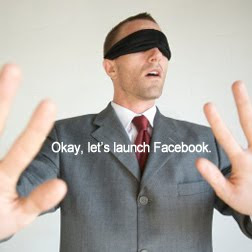
It may take some time, but the Transportation Security Administration (TSA) and Department Of Homeland Security will eventually lose the argument they have chosen, and their failed public relations program is only part of the reason. The real problem is they have chosen the wrong argument in what seems to be an attempt to dumb down complaints.
“We are constantly evaluating and adapting our security measures, and as we have said from the beginning, we are seeking to strike the right balance between privacy and security,” John Pistole
said in a statement.
Except, it's not a privacy issue. It's a liberty issue."The right of the people to be secure in their persons, houses, papers, and effects, against unreasonable searches and seizures, shall not be violated, and no Warrants shall issue, but upon probable cause, supported by Oath or affirmation, and particularly describing the place to be searched, and the persons or things to be seized." — The Fourth Amendment (Amendment IV), United States Constitution
Currently, no matter how you frame it (even claiming that certain transportation methods are privileges, as if), TSA policies are a direct infringement on the fourth amendment. And, even the TSA argument, that
75 to 80 percent of the public supported these measures, we might remember the U.S. Constitution was not written to protect a democratic majority, but the minority.
Heck, I've seen polls over the years that suggest better than half of all Americans would vote to have their homes searched without warrants too (based on the pretense they have nothing to hide). And a certain percentage are in favor of installing videos everywhere to help quell their irrational fears. But that doesn't make it right, just, or even remotely American as
Henry Blodget seems to pretend.
The most recent TSA policies, those that were inspired by
timing (and despite a bill that barred their use as primary scanners) along with pat-downs, are a threat not to our privacy but to our liberty to travel freely in the United States. Unchecked, you could argue such tactics for anyplace where people congregate (don't laugh). And if that continues to happen, unless Americans speak out against early infringements, we may as well declare the very people we are protecting ourselves from the victors.
"They who can give up essential liberty to obtain a little temporary safety, deserve neither liberty nor safety." — Benjamin FranklinI ought to make it clear, I'm not necessarily a fan of TSA security officer bashing in general, especially after my recent experience with air travel. Not every airport is staffed by overzealous or authoritative agents. Most are decent, respectful people, with the difference between departing from Las Vegas and departing from Providence like night and day.
Granted, one airport is significantly busier than the other. However, the professionalism, demeanor, organization, and courtesy of the agents in Rhode Island was light years ahead of Las Vegas, where it is made abundantly clear that the security check points are to screen for terrorists with every citizen and visitor being a suspect. Management in Las Vegas ought to take note.
Our representatives might take note too.
The hypocrisy is deafening. The laughter is disheartening, conjuring images of being subjects as opposed to citizens once again.
The brewing public relations nightmare is a point of contact problem. In response to the backlash of a situation that the TSA created, Pistole has resorted to begging citizens against opting out of full image scanners and pat downs, especially during Thanksgiving. It wouldn't be fair, he argues, to make it a hassle for those trying to make it home during the holidays, as if the opt-outers are somehow responsible for the decisions the TSA made.
I'm sure many colonists were put off when their tea was tossed into the Boston Harbor too. That's the way it goes sometimes.
The only solution to fix the continued erosion of TSA's reputation is to reverse some invasive policies and, most importantly, understand that for the majority of air traveling Americans, the point of contact — security check points — IS the public relations program. Every TSA security officer IS also a public relations agent. No amount of communication can change this fact; even TSA's mission statement demands it.
The TSA is operating out of alignment with its mission."The Transportation Security Administration protects the Nation’s transportation systems to ensure freedom of movement for people and commerce." — TSA Mission Statement
While some people consider the horror stories related to pat-down searches, each infraction need not be excused away as accidental lapses in service. They are in direct violation of the agency's own code of conduct to "respect and care for others and protect the information we handle."
The point is that the administration is
causing its own problems, which stems in part from Pistole operating off the TSA mission statement with his own, as provided for in
his bio, to "grow as a risk-based, intelligence-driven counterterrorism agency dedicated to protecting our transportation systems."
His approach seems to have nothing to do with respect and care for others or to ensure freedom of movement for people. But, without meaning to disparage his otherwise respectable career, individual visions do not trump an agency's mission. If the TSA truly wants to be on the same side as the public, it will change its policies, adopt less invasive procedures that have resulted in better outcomes elsewhere in the world, and remind officers that their employers are the people in front of them.
Full body imaging is only the beginning, says the TSA website.Don't expect it to happen soon. The TSA has outlined exactly how aggressive it will become in the near future. In developing what one of my colleagues calls the theater of checkpoint security, the TSA states it has deployed more than 900 X-ray systems and 450 imaging scanners, plans to add biometric identification systems (fingerprints and iris scans), and expand operations to include not only subways and other transportation, but "important facilities" as well. Think about that for a minute. Or two.
Then consider that these
videos will become more frequent and the responses less
defensive. According to the response, the father removed the shirt of his son to expedite a search, but what remains unclear is why removing the shirt might have expedited it.
All this, and it's still safer to board a plane (1:10.46 MILLION) than to drive a car (1:84). I'm slating the issue as a case study.









































